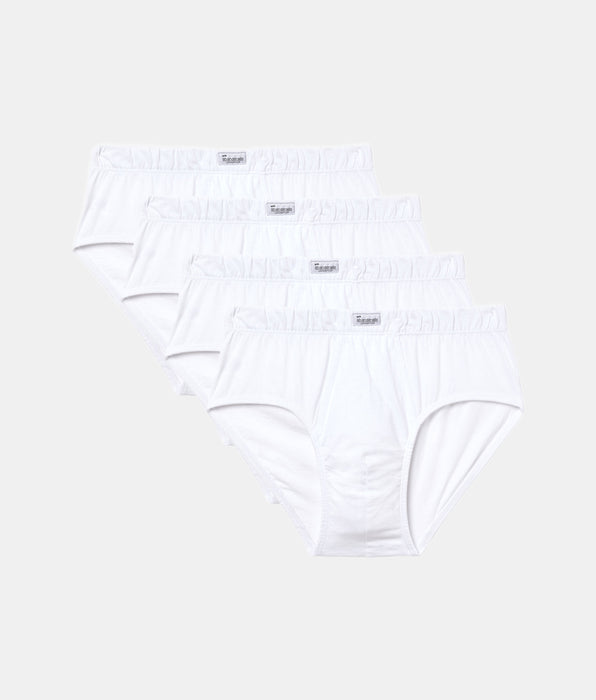If we conducted a survey of the most well-known and appreciated types of fabrics, cotton would probably be one of the most cited. Without a doubt, its qualities support this preeminent position, which we at Abanderado endorse, as it's one of the materials we use most. But what do you really know about this plant? These
interesting facts about cotton will surprise you!
6 interesting facts about cotton that make this fabric even more interesting
Surely, if we tell you that cotton is a highly valued fabric for
its pleasant feel, breathability, and durability , we're not telling you anything you don't already know. However, we hope these interesting facts about cotton will give you some information you didn't already know.
The etymology of its name is Arabic
When did humans begin using cotton? It's difficult to pinpoint an exact date. It seems that
the first cotton cultivation dates back to Mexico around 8,000 years ago . It is also known that it was used by the Persians and Mesopotamians, and by ancient cultures in Africa and Asia. Truly, it is an
ancient plant , widespread across the globe.
What is not in doubt is the etymology of the word, because
cotton comes from the Arabic term "al-qutum," after the Arabic word "al-qutum" (al-qutum), which was introduced to Europe by the Arabs. There is no consensus on its meaning, although the most widely held theory is that
it refers to a fine fabric .
There are more than 40 varieties of cotton
We talk about cotton generically, as if it were just one plant. However, this plant, belonging to the Malvaceae family and the Gossypium genus, has more than 40 varieties. Of these, four are used in the textile industry as the most versatile
types of cotton :
-
Gossypium herbaceum . Native to Southern Africa and the Arabian Peninsula. Its fibers are shorter and less durable, which compromises its quality.
-
Gossypium barbadense. The famous Egyptian cotton, prized for its exceptional quality.
-
Gossypium arboreum. It is cultivated in India and Pakistan. It is considered to be of poorer quality, which is why it is the least used for clothing manufacturing.
-
Gossypium hirsutum. It is the origin of Mexican cotton and cotton from the American continent in general. It is the most widely used type due to its extraordinary softness and breathability.
There is a World Cotton Day
Yes, cotton also has its own day.
October 7th is World Cotton Day, since 2019, no less . And what is the origin of this commemoration? Well, it's the result of a petition to the World Trade Organization by four countries. They are known as the "Cotton Four" or C-4 (Burkina Faso, Mali, Chad, and Benin), the largest producers in sub-Saharan Africa.

Growing cotton requires a lot of resources
One of the main problems with cotton cultivation is that it involves a huge expenditure of resources. These figures sum it up perfectly:
-
It takes 165 days to grow , with intense watering for about 120 days.
- Producing one kilo of cotton requires a minimum expenditure of 5,000 liters of water .
- Conventional cotton farming consumes 25% of the insecticides and 10% of the pesticides used in agriculture.
With these figures, it's easy to deduce that, a priori, this isn't a particularly sustainable crop. However, organic cotton, which we use in
Abanderado's Ecosmart collection , is currently gaining popularity. It's the ecological version of cotton.
Cottonseed is used to make oil.
We usually focus on the textile aspect of the cotton plant, but it has other uses. Among the most interesting is the extraction of oil from its seeds. Cottonseed oil
is used in the pharmaceutical and cosmetic industries , with the following applications:
-
In soaps, creams, and gels for skin care. Cottonseed oil is rich in vitamins E and D, which give it interesting antioxidant properties. It also improves hydration and elasticity. It also has a regenerative effect on tissues.
- In pharmacies, it can be found in certain laxatives that take advantage of its lubricating properties.
By the way,
cottonseed oil is edible! With a pleasant chestnut-like flavor and an attractive reddish-yellow color, it's an ideal dressing for salads or sauces, even for fried foods. It provides the recommended daily amount of
vitamin E and is heart-healthy , as long as consumed in moderation.
The largest cotton producers are spread all over the world
We previously mentioned the
C-4 group as major cotton-producing countries in Africa, but that doesn't mean they're the only ones. Another interesting fact about cotton is that it's a crop spread all over the world. The leading cotton-producing countries are
the United States, India, China, Brazil, and Pakistan .
This is undoubtedly because it's a very hardy plant,
adapting to different climatic conditions , whether dry or humid. However, it does need plenty of sunlight to dry out and prevent rot.
These six interesting facts about cotton are just a sample of everything that comes with cultivating this unique plant. At Abanderado, we've chosen to incorporate the most sustainable and highest-quality cotton into our underwear collections, because we strive to offer you comfort while protecting the environment.


























